Key Takeaways
1. AI in hiring: Promise vs. reality of reducing bias and finding top talent
"The promise of AI in the hiring process is that these tools will find the most qualified candidates at a lower price in less time without bias."
Reality check. While AI promises to revolutionize hiring by eliminating human bias and efficiently identifying top talent, the reality is far more complex. Many AI hiring tools:
- Perpetuate existing biases present in training data
- Lack transparency in decision-making processes
- Often fail to account for diverse experiences and backgrounds
Unintended consequences. The widespread adoption of AI in hiring has led to:
- Qualified candidates being screened out due to arbitrary criteria
- Increased difficulty for job seekers to understand why they were rejected
- A shift in power dynamics, giving employers unprecedented access to personal data
2. Résumé screeners: Perpetuating discrimination and excluding qualified candidates
"If you could really measure the things that determine flight risk, it wouldn't be really fair to be measuring it."
Flawed algorithms. Many résumé screening tools rely on problematic criteria that have little to do with job performance:
- Keywords unrelated to job skills (e.g., hobbies, names)
- Gaps in employment history
- Arbitrary educational requirements
Exclusionary practices. These tools often:
- Disproportionately exclude women, minorities, and candidates with non-traditional backgrounds
- Rely on correlations rather than causation in predicting job success
- Fail to account for transferable skills or unique experiences
To combat these issues, companies should:
- Regularly audit their screening tools for bias
- Prioritize skills-based assessments over keyword matching
- Involve human oversight in the screening process
3. Social media analysis: Invasion of privacy and questionable predictive value
"It really is a different level of intrusiveness that we haven't seen in workplaces, at least the vast, vast majority of workplaces before."
Privacy concerns. Social media analysis tools claim to reveal candidates' true personalities, but raise serious ethical issues:
- Often operate without explicit consent
- May access private information not intended for employers
- Blur the line between personal and professional lives
Dubious science. The predictive value of social media analysis is questionable:
- Personality traits derived from online behavior may not translate to job performance
- Context and nuance are often lost in algorithmic analysis
- Different platforms may yield conflicting results for the same individual
Employers should consider:
- The legal and ethical implications of using such tools
- The potential for alienating qualified candidates
- Alternative methods for assessing soft skills and cultural fit
4. AI games in hiring: Unproven methods masquerading as scientific assessments
"Is blowing up balloons really a measure of risk-taking?"
Lack of evidence. Many AI-based games used in hiring lack scientific validation:
- Often based on dubious correlations rather than proven causation
- May not accurately measure skills relevant to job performance
- Can disadvantage candidates with disabilities or different cognitive styles
False precision. These games often provide a false sense of objectivity:
- Generate precise-looking scores that may not reflect actual abilities
- May inadvertently discriminate against certain groups
- Fail to account for the complexity of human behavior and potential
To address these issues:
- Demand independent validation studies from vendors
- Use games as a supplement to, not a replacement for, traditional assessments
- Ensure accommodations are available for candidates with disabilities
5. Video interviews: Facial analysis and voice intonation lack scientific basis
"The face is not a window into the mind."
Pseudoscience. Facial expression and voice analysis in hiring lack scientific validity:
- Emotions and personality traits cannot be reliably inferred from facial movements or voice tone
- Cultural and individual differences in expression are often overlooked
- Technology may misinterpret neutral expressions or speech patterns
Discriminatory potential. These tools can unfairly disadvantage certain groups:
- People with disabilities affecting facial movements or speech
- Candidates from diverse cultural backgrounds
- Individuals with accents or non-standard speech patterns
Alternatives to consider:
- Structured interviews with standardized questions
- Skills-based assessments directly related to job requirements
- Diverse hiring panels to mitigate individual biases
6. Workplace surveillance: Productivity tracking's negative impact on employees
"Being monitored for your performance does increase your stress, does increase your negative attitudes, but it doesn't accomplish the goal that it is meant to accomplish, which is to improve your performance."
Counterproductive measures. Extensive workplace surveillance often backfires:
- Increases employee stress and burnout
- Leads to "productivity theater" rather than genuine engagement
- Erodes trust between employers and employees
Privacy concerns. Surveillance raises serious privacy issues:
- Blurs the line between work and personal life
- May capture sensitive personal information
- Can create a culture of fear and mistrust
To create a healthier work environment:
- Focus on outcomes rather than micromanaging activities
- Involve employees in setting productivity goals
- Establish clear boundaries for data collection and use
7. Health data at work: Personalized benefits vs. privacy concerns
"If you are not managing the company to be healthy, you're not going to be able to undo that by giving people a yoga class."
Double-edged sword. Health data collection at work presents both opportunities and risks:
- Can lead to more personalized benefits and support
- Raises concerns about data privacy and potential misuse
- May blur the line between professional and personal health management
Ethical considerations. Employers must carefully navigate:
- Legal requirements around health data protection
- Potential for discrimination based on health information
- Employee consent and transparency in data collection
Best practices for employers:
- Clearly communicate how health data will be used
- Offer opt-out options for employees
- Ensure robust data security measures are in place
8. AI-driven terminations: The dangers of algorithmic decision-making
"An overly rigid application of a productivity algorithm will result in unlawful treatment."
Lack of context. AI-driven termination decisions often fail to consider:
- Individual circumstances affecting performance
- Temporary setbacks or challenges
- The human impact of job loss
Legal and ethical risks. Relying solely on algorithms for terminations can lead to:
- Wrongful termination lawsuits
- Discrimination against protected groups
- Erosion of employee morale and trust
To mitigate these risks:
- Implement human oversight in termination decisions
- Provide clear performance metrics and feedback to employees
- Offer opportunities for improvement before resorting to termination
9. One-size-fits-all approach: Failing to account for individual circumstances
"The use of these technologies is not only increasing employers' power, but it's decreasing their incentive to take into account individual variations and workers' circumstances or the reasons that different things happen in the workplace."
Oversimplification. One-size-fits-all AI approaches in the workplace often:
- Fail to account for diverse skills and experiences
- Ignore the unique contributions of individual employees
- Overlook the complexities of human behavior and motivation
Unintended consequences. This approach can lead to:
- Talented individuals being overlooked or undervalued
- Decreased diversity in hiring and promotion
- A rigid work culture that stifles creativity and innovation
To create a more inclusive workplace:
- Combine AI insights with human judgment
- Regularly review and update AI models to reflect workforce diversity
- Encourage feedback from employees on how they are evaluated
10. Predictive analytics: Limitations in forecasting human behavior and job performance
"These problems are hard because we can't predict the future. That should be common sense. But we seem to have decided to suspend common sense when AI is involved."
Overconfidence in technology. Many organizations place too much faith in AI's ability to predict human behavior:
- Ignore the complexity of factors influencing job performance
- Overlook the role of chance and external circumstances
- Fail to account for human adaptability and growth
Ethical concerns. Relying heavily on predictive analytics can lead to:
- Self-fulfilling prophecies in employee development
- Unfair treatment based on projected, rather than actual, performance
- Neglect of human potential for growth and change
To use predictive analytics responsibly:
- Recognize the limitations of AI in forecasting human behavior
- Use predictions as one input among many in decision-making
- Regularly reassess the accuracy and fairness of predictive models
Last updated:
FAQ
What's The Algorithm about?
- AI in Employment: The Algorithm by Hilke Schellmann delves into the growing use of artificial intelligence in hiring, monitoring, promoting, and firing employees, highlighting its impact on workplace fairness and discrimination.
- Real-World Implications: Through case studies and personal stories, the book illustrates the real-world consequences of AI-driven decisions in employment, emphasizing the need for awareness and action.
- Call for Change: Schellmann advocates for transparency and accountability in AI systems, urging society to challenge their use in employment decisions.
Why should I read The Algorithm?
- Understanding AI's Impact: The book provides insights into how AI technologies affect employment, making it essential for job seekers and HR professionals to understand potential biases.
- Awareness of Discrimination: It highlights how AI can reinforce existing biases against marginalized groups, emphasizing the importance of being informed.
- Practical Advice: Schellmann offers practical tips for navigating AI-driven hiring processes, making it a valuable resource for job seekers.
What are the key takeaways of The Algorithm?
- AI's Prevalence in Hiring: The book reveals that AI is used by 99% of Fortune 500 companies for hiring, yet many job seekers are unaware of its operation.
- Bias in Algorithms: Schellmann discusses how algorithms can discriminate based on race, gender, and other factors due to biased training data.
- Need for Oversight: The author argues for regulations to ensure fair and transparent use of AI in hiring, to prevent systemic discrimination.
How does The Algorithm address bias in AI hiring tools?
- Real Stories Highlight Bias: The book shares personal accounts of individuals facing discrimination due to flawed AI systems, illustrating the impact of these biases.
- Critique of Training Data: Schellmann emphasizes that biased training data can lead to discriminatory outcomes, particularly concerning in high-stakes hiring.
- Call for Transparency: The author advocates for transparency in AI tool development and usage, urging companies to disclose methodologies and training data.
What are some examples of AI tools discussed in The Algorithm?
- Résumé Screeners: These tools analyze résumés for suitability but can be biased, as seen in Amazon's failed screener that discriminated against women.
- Video Interviewing Software: AI analyzes candidates' expressions and tone in video interviews, criticized for lack of scientific validity and potential misinterpretation.
- Gamified Assessments: Tools like Pymetrics use games to assess traits, aiming to reduce bias but raising concerns about relevance and effectiveness.
What are the best quotes from The Algorithm and what do they mean?
- Promises vs. Reality: “The ‘revolution’ and fair decision-making that AI vendors promise were definitely missing in her case.” This highlights the gap between AI vendors' promises and the reality faced by individuals.
- Discrimination Warning: “Discrimination could be rampant in these automated systems.” This serves as a warning about unchecked algorithm use in high-stakes decisions.
- Fairness in Hiring: “We need to ensure that employment opportunities are based on merit and qualifications.” This encapsulates the book's message about fairness in hiring.
How does AI affect hiring decisions according to The Algorithm?
- Automated Screening: AI is used to screen resumes, potentially overlooking qualified candidates due to biases.
- Opaque Decision-Making: Candidates often don't know how their applications are evaluated or why they were rejected, highlighting a lack of transparency.
- Potential Discrimination: AI tools can unintentionally discriminate, particularly against those with disabilities, by not accounting for individual needs.
What are the ethical concerns raised in The Algorithm?
- Privacy Issues: Concerns about personal data collection and use by AI systems, often without individuals' consent or knowledge.
- Bias in Algorithms: Using biased data to train AI systems can lead to unfair treatment based on race, gender, or disability.
- Impact on Rights: AI in hiring and monitoring can undermine workers' rights, particularly regarding transparency and accountability.
How does The Algorithm address the issue of disability in the workplace?
- Disability Discrimination: AI hiring tools can discriminate against individuals with disabilities, often failing to accommodate their needs.
- Real-Life Challenges: Narratives from vocational counselors and job seekers illustrate the impact of AI-driven hiring on those with disabilities.
- Advocacy for Inclusivity: The author calls for more inclusive hiring practices that consider candidates' abilities beyond automated assessments.
What recommendations does The Algorithm make for companies using AI?
- Conduct Bias Audits: Regularly audit AI tools for bias and effectiveness to prevent discrimination.
- Human Interaction: Maintain human oversight in hiring to allow meaningful conversations about candidates' qualifications.
- Transparent Practices: Be transparent about AI tool usage and provide candidates with clear evaluation information.
How can job seekers navigate AI-driven hiring processes as discussed in The Algorithm?
- Optimize Resumes: Create machine-readable resumes with common templates and keywords to pass automated screenings.
- Network and Follow Up: Increase visibility and demonstrate interest by networking and following up with recruiters.
- Prepare for AI Assessments: Familiarize with AI assessment tools and prepare, understanding they may not fully capture abilities.
How does The Algorithm suggest we can improve AI hiring practices?
- Diverse Data: Use diverse and representative data sets to train AI systems, ensuring inclusivity and reducing bias.
- Engage Stakeholders: Involve employees and advocacy groups in discussions about AI tool implementation in hiring.
- Legislative Action: Call for stronger regulations and oversight of AI technologies to protect workers' rights and ensure fair practices.
Review Summary
The Algorithm receives mostly positive reviews for its thorough exploration of AI's impact on hiring and workplace practices. Readers praise Schellmann's research and accessible writing style, highlighting the book's revelations about bias in AI tools and their potential harm to job seekers. Critics note the book's narrow focus and repetitive themes. Many readers find the content eye-opening and recommend it to those interested in AI's role in employment. Some suggest the book could benefit from more solutions and a broader scope.
Similar Books

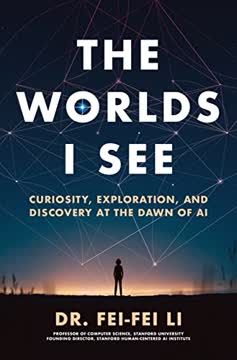

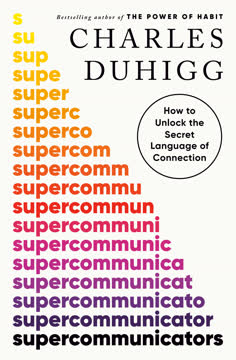

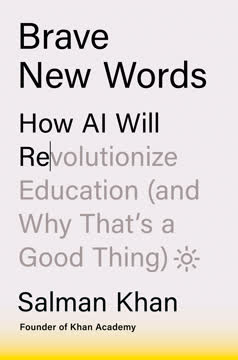

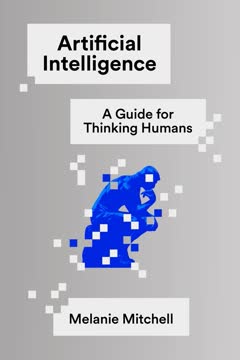
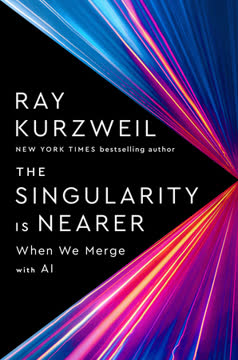
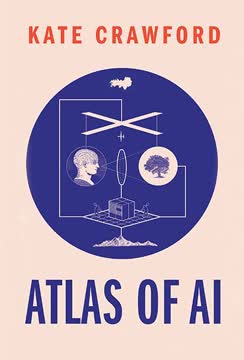
Download PDF
Download EPUB
.epub digital book format is ideal for reading ebooks on phones, tablets, and e-readers.




